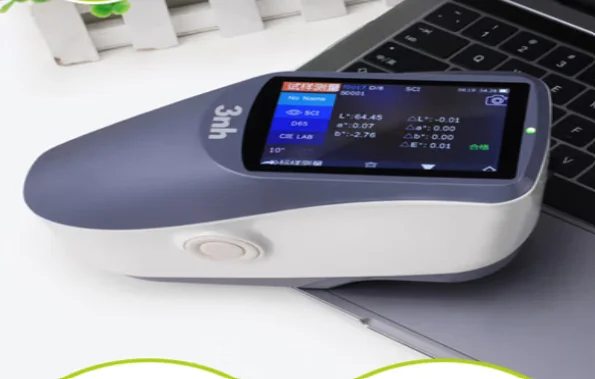When it comes to precise measurement in industries like printing, textiles,mim metal, plastics, paints, and food production, one tool stands out as essential: the spectrophotometer. With technology advancing rapidly, professionals are often faced with the question of which device to choose for their specific tasks. Understanding how a spectrophotometer measures, what spectrophotometers are used for, and the many spectrophotometer uses across industries is the first step in making an informed decision.
- Understanding What a Spectrophotometer Is
- What Does a Spectrophotometer Measure?
- Spectrophotometers Used For Different Industries
- Spectrophotometer Uses: Why Businesses Rely on Them
- Choosing the Right instrument Option for Your Needs
- Expert Tips for Best Results
- The Future of Spectrophotometer Uses
- Conclusion
Understanding What a Spectrophotometer Is
A spectrophotometer is an advanced scientific instrument designed to measure the intensity of light as a function of wavelength. In simple terms, it helps determine the exact color and its properties by analyzing how light interacts with a sample. Whether you’re comparing shades of fabric, testing paint consistency, or ensuring accurate food coloring, this tool offers unmatched precision.
Why This Matters:
Knowing how a spectrophotometer measure can help you appreciate its value. The device captures data that the human eye cannot detect, eliminating subjective errors and guaranteeing consistent results.
What Does a Spectrophotometer Measure?
The spectrophotometer measures the amount of light that is either absorbed, transmitted, or reflected by a sample. It does so on a broad spectrum of the electromagnetic spectrum. The emerging data helps in quantification of color, concentration, and structure of the chemicals.
The instruments measure spectral light that has some values of the intensity of light at various wavelengths. This makes spectrophotometers the most favorable when studying the color and transparency of solid, liquid, or translucent materials.
Using a spectrophotometer allows measuring precise color details of virtually any sort of sample plastic, clothes, paint, or clear fluids.
Spectrophotometers Used For Different Industries
One of the greatest strengths of spectrophotometers is their versatility. They are not limited to a single industry but are widely adopted wherever accurate color measurement is critical.
- Printing and Packaging: Ensures logos and brand colors remain consistent across marketing materials.
- Textiles: Helps match dyes and fabrics for fashion and interior design.
- Plastics and Paints: Guarantees product batches remain uniform in shade and finish.
- Food and Beverages: Monitors colors in items like juices or candies to ensure customer expectations.
- Cosmetics: Validates shades of makeup products like foundations and lipsticks.
When you understand what spectrophotometers are used for, you realize how essential they are to maintaining quality and customer trust.
Spectrophotometer Uses: Why Businesses Rely on Them
The broad range of spectrophotometer uses goes beyond simple color checks. Businesses use these instruments for:
- Quality Control: To ensure consistent results across multiple production runs.
- Research and Development: To create new products and test innovative materials.
- Regulatory Compliance: To meet strict industry standards for safety and appearance.
- Cost Savings: By reducing waste and minimizing rework due to color inconsistencies.
By incorporating spectrophotometers into their workflows, companies protect their reputation and build stronger relationships with their customers.
Choosing the Right instrument Option for Your Needs
Selecting the ideal spectrophotometer depends on your industry, workflow, and specific goals. Here are some expert considerations:
1. Define Your Application
Are you in textiles, printing, plastics, or food production? Each industry has unique demands. For example, a textile manufacturer may need portable devices for on-site dye testing, while a packaging company may prefer benchtop instruments for laboratory precision.
2. Consider Measurement Needs
Understanding how a spectrophotometer measures light and color can guide you toward the best fit. Some devices measure reflectance (ideal for opaque materials), while others measure transmittance (used for transparent samples like liquids or glass).
3. Evaluate User Experience
Not all teams have technical expertise. Choose a device with a user-friendly interface if your staff needs quick adoption. Modern spectrophotometers often include digital software that integrates seamlessly into workflows.
4. Accuracy and Range
Some projects demand extreme accuracy, such as matching medical or cosmetic shades, while others can tolerate minor variances. Match the device’s capabilities to your precision requirements.
5. Budget and ROI
While cost is always a factor, remember that investing in a high-quality spectrophotometer pays off in reduced errors, higher efficiency, and better customer satisfaction.
Expert Tips for Best Results
- Regular Calibration: Always calibrate your instrument to maintain accuracy.
- Consistent Conditions: Measure colors under standardized lighting and environmental settings.
- Staff Training: Ensure your team understands how to operate the device and interpret results.
- Integration with Standards: Use recognized industry standards (like Pantone or RAL) to benchmark your results.
These steps ensure that you’re getting the most from your investment, no matter how you plan to use the device.
The Future of Spectrophotometer Uses
As industries evolve, so too will the applications of spectrophotometers. From advanced automation in manufacturing to enhanced digital communication of color data, these instruments will remain central to global production processes. Businesses that adapt and choose the right tools today will find themselves better positioned to meet future challenges.
Conclusion
Choosing the right spectrophotometer begins with understanding how a spectrophotometer measures, recognizing what spectrophotometers used for, and identifying the specific spectrophotometer uses relevant to your industry. Whether your goal is to improve quality control, enhance R&D, or maintain brand consistency, investing in the right option can provide long-term benefits.
With careful evaluation and a commitment to best practices, you’ll be equipped to select the ideal spectrophotometer for your needs—ensuring accuracy, efficiency, and customer satisfaction for years to come.
